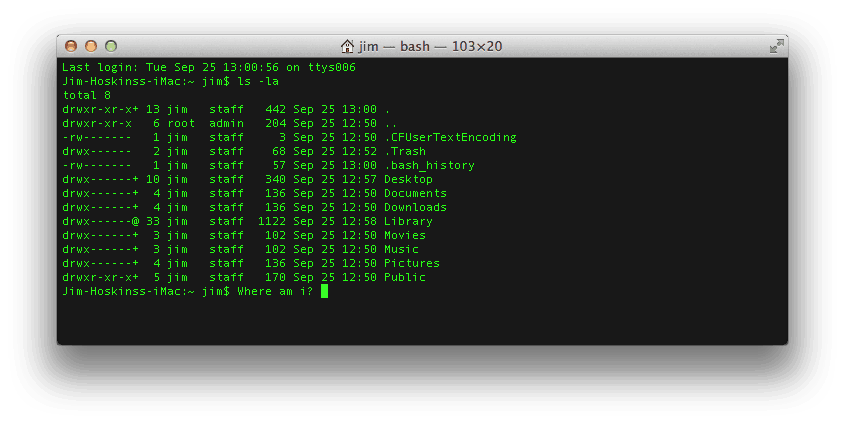
However, you can run at least some of the GUI apps from Terminal if you know the proper path. For instance, if you enter the following command into a Terminal window:
/Applications/Preview.app/Contents/MacOS/Preview
the Preview application will start.
If you look at this path name, you can start to see some of the problems with trying to add GUI apps to your unix path. These apps are not directly in the /Applications directory. In general, each GUI app will be in its own directory. So, if you wanted to run lots of GUI apps from Terminal by typoing only the name of the app, you would have to add something to your path for each app. Another issue is that it might not always be clear what is actually the proper file to invoke. For instance, I have tried to start Microsoft Office from Terminal but have failed. It is possible that I did not find the correct file to use. I am also wondering if all GUI applications can be started from the Terminal - I am not convinced that that is the case.
There is one nice feature of the Terminal that is germane to this discussion. If you are in Terminal and your working directory contains some document, you can use the open utility to open that file in the correct GUI application. For instance, if I have a pdf file called test.pdf in my directory, I can issue the Terminal command
open test.pdf
and this will cause Preview (or perhaps Acrobat) to start up and to open the file.
I hope this helps to answer your question. You did not say what it is that you want to do. If you there is a specific task that you would like to accomplish, please let us know and perhaps someone can help. Also, you can get very good help in the unix forum.
Rich
EMAC G4 1.0 GHz Mac OS X (10.4.8)

Jan 3, 2007 7:20 PM

- The Terminal app lets you control your Mac. In this article, we explain what is Mac Terminal, how to use it, and what it can do for you. In many macreports.com articles, we recommend our readers to use the Terminal app to troubleshoot various problems that our readers may be having with your Mac.
- The preferences dialog for Terminal.app in OS X 10.8 (Mountain Lion) and later offers choices for values of the TERM environment variable. Available options are ansi, dtterm, nsterm, rxvt, vt52, vt100, vt102, xterm, xterm-16color and xterm-256color, which differ from the OS X 10.5 (Leopard) choices by dropping the xterm-color.
Mac Os Terminal If App Is Running Statement For A
In the Terminal app on your Mac, enter the complete pathname of the tool’s executable file, followed by any needed arguments, then press Return. If a command is located in one of the shell’s known folders, you can omit path information when entering the command name. On a related note, on Mac OS X you should consider having /.bashrc run /etc/bashrc to pick up global behaviors. In particular, there's code in /etc/bashrc to update the working directory at each prompt, which is what enables Terminal to display the proxy icon, create new terminals at the same directory, and restore the working directory for. I want to check if particular application is installed in Mac OS using Perl/Shell scripts. I am writing package using PackageMaker in which i need to check user machine for few applications before installing the application. So am planning to write a script that will check this for me. Please advice if I can perform this in better way.